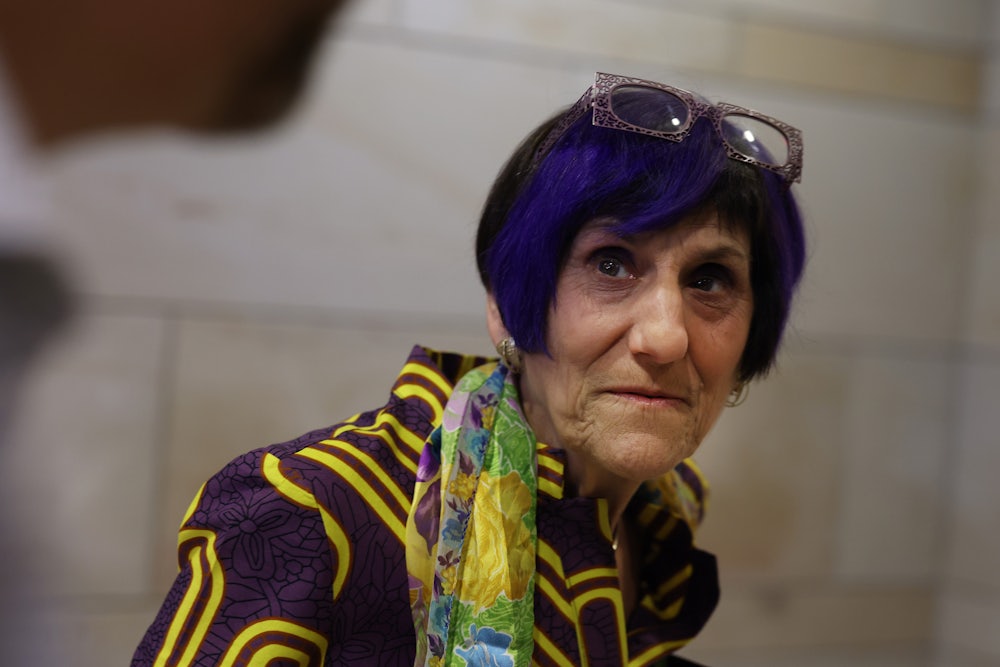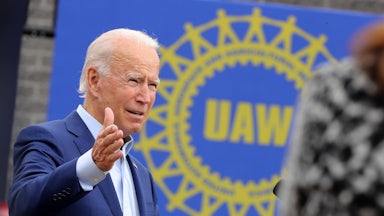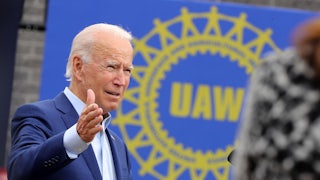Something important is happening this week, something that never would have happened if Donald Trump had been reelected or if the Republicans had controlled either house of Congress. The child tax credit, or CTC, checks are starting to go out to parents across the country. A couple earning $100,000 with two children will get a $600 check from the government for the next six months, and then they’ll get a $3,600 refund when they file taxes next year.
It’s a huge deal. The CTC has existed in various forms since the George H.W. Bush administration, back in the days before Republicans became total greedheads. (Orrin Hatch, Mr. Bipartisan once upon a dear old time, was a champion.) But its generosity was always fairly limited. For example, families that fell below a certain income threshold weren’t eligible for any proceeds, so the poorest families didn’t benefit. Moreover, it was, at times, a nonrefundable tax credit, meaning that the lowest-income families were often unable to claim the full refund.
But things changed when the American Rescue Plan passed in March. Now families are getting direct checks. And the tax credit is fully refundable. The general estimate is that this measure will cut child poverty in half (around 12 million children live in poverty in this country).
Thank Joe Biden. Thank chief of staff Ron Klain. Thank economic adviser Jared Bernstein. But most of all, thank Representative Rosa DeLauro of Connecticut. Reducing child poverty has long been her crusade.
DeLauro made it her mission because she was once a child in poverty herself. Her mother was a garment worker, who toiled away in a sweatshop. Her father sold insurance. But they were poor. One day, when she was 10, she came home to discover that “all our furniture was out on the street,” she recalled to me over the weekend.
DeLauro came out of it all right—she ended up going to the London School of Economics. Her formal education, combined with her life experiences, made it easy for her to decide what she would focus on when she entered politics.
She first introduced a significant expansion of the CTC in 2003. Republicans controlled the House then, so she knew she’d lose the committee vote, but she got the issue on the table. She has introduced her bill every year since then. “It’s not that there was really opposition,” she says. “There was just an indifference to child poverty.”
She pitched the idea for expanding the CTC to the Biden campaign, with the help of Chris Dodd, the former Connecticut senator for whom DeLauro once worked. A handful of legislators whom DeLauro refers to as the CTC Six took special interest in the cause: Michael Bennet, Cory Booker, and Sherrod Brown in the Senate, and House colleagues Suzan DelBene and Ritchie Torres (in addition to DeLauro).
The CTC expansion wasn’t originally in the American Rescue Plan, as the Covid relief bill was formally known. But DeLauro called Bernstein, Klain, and others to press her case. “I said, ‘Look, it’s in your tax policy.’ The moment is now,” she says. “And it wasn’t 24 or 48 hours later that I got a call saying it’s in.”
After the bill passed, she recalls being at a meeting in the Oval Office where Joe Biden was sitting right under a large portrait of FDR. “I said, Mr. President, you’re under this portrait of Franklin Roosevelt,” DeLauro says. “Think about it. With the stroke of a pen, he lifted 90 percent of seniors out of poverty with the Social Security Act. You can lift 50 percent of children out of poverty in the same way.”
The catch is that the expanded credit isn’t permanent. It’s set to expire at the end of the year, when the credit of up to $3,600 will revert to $2,000 unless action is taken. Biden has committed to trying to renew it for four years. Making it permanent would cost an estimated $1.6 trillion over 10 years.
That’s not chump change. DeLauro says beefing up IRS enforcement, as the Biden administration is doing, can pay for a lot of it. But whatever the cost, consider this. The Trump tax cut of 2017 was estimated to cost $2.3 trillion over 10 years. And those tax cuts redistributed income from the middle to the top, as Republican tax policies invariably do.
The CTC redistributes income to the bottom. According to the Tax Foundation, families in the lowest quintile would see their tax bills reduced by 11.4 percent. And the families in the top 5 percent of the income distribution? They would save zero.
Now that’s how tax policy is supposed to work in a democracy. It’s just thrilling to see 40 years of supply-side bunkum being turned on its head this way.
The hope is that the expanded credit can be made permanent, or at least extended for a few years, in the human infrastructure reconciliation package that Biden and the Democrats want to pass soon after the bipartisan hard infrastructure bill. Those are both still iffy propositions. Should Democrats succeed, however, these measures, along with the American Rescue Plan, will constitute the most aggressive government intervention in the economy since the New Deal.
The story of the CTC demonstrates how long it takes for this sort of change to happen, and how many people often need to team up, from advocates and academics (Columbia University’s Center on Social Policy was a key player on this issue) all the way up to a president who says yes. But the real hero here is DeLauro.








